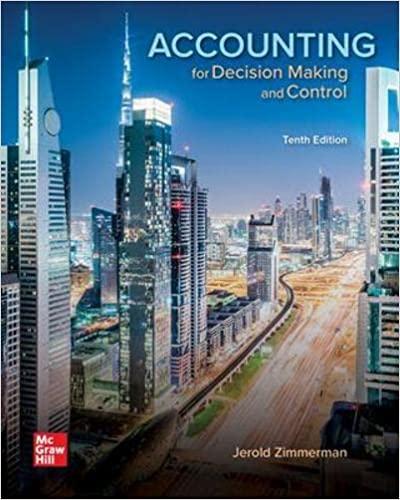Answered step by step
Verified Expert Solution
Question
1 Approved Answer
Clyde's cleaning supplies makes a liquid industrial cleaner for the ship building industry. The ingredients for the liquid cleaner pass through: the Mixing department where
Clyde's cleaning supplies makes a liquid industrial cleaner for the ship building industry. The ingredients for the liquid cleaner pass through: the Mixing department where all ingredients are added and blended the Bottling department where the cleaner is put into bottles. Information for the Mixing department for May is as follows: UNITS: Beginning work-in-process 20,000 litres Units started during May 540,000 litres Units completed in May 530,000 litres COSTS: Beginning work-in-process direct ingredients$14,000 Beginning work-in-process conversion$5,640 Direct ingredients added during month$350,000 Conversion costs added during the month$230,000 Beginning work-in-process was 50% complete as to conversion. Direct ingredients are added at the beginning of the process. All conversion costs are incurred evenly throughout the process. Ending work-in-process was 60 percent complete. Required: a. Using the weighted-average method determine the total cost of litres transferred-out to the Bottling department during May the total cost of ending inventory in the Mixing department at the end of May. Use the form on the next page. b. Prepare the journal entry to transfer the cost of the units completed in May to the Bottling department work-in-process inventory. (use the space provided below) c. Calculate and compare the actual cost per equivalent litre for direct ingredients in beginning inventory with the actual cost per equivalent litre for direct ingredients added for the period. (calculate each cost to 4 decimals) d. Calculate the transferred-in cost per litre in the Bottling department. STEP 1: Units to be accounted for: Quantity Schedule Production report Work in process, beginning Started into production Total units Equivalent units Units accounted for: Materials Conversion STEP 2: Cost to be accounted for: Total Prod. Costs Total costs Materials Conversion Total cost (a) Equivalent units of production (b) (Step 1 above) Cost per equivalent unit (a / b) STEP 3: Cost Reconciliation Equivalent units Materials Conversion Total cost of goods completed Total ending work in process Total cost STEP 1: Units to be accounted for: Quantity Schedule Production report Work in process, beginning Started into production Total units Equivalent units Units accounted for: Materials Conversion STEP 2: Cost to be accounted for: Total Prod. Costs Total costs Materials Conversion Total cost (a) Equivalent units of production (b) (Step 1 above) Cost per equivalent unit (a / b) STEP 3: Cost Reconciliation Equivalent units Materials Conversion Total cost of goods completed Total ending work in process Total cost
Step by Step Solution
There are 3 Steps involved in it
Step: 1

Get Instant Access to Expert-Tailored Solutions
See step-by-step solutions with expert insights and AI powered tools for academic success
Step: 2

Step: 3

Ace Your Homework with AI
Get the answers you need in no time with our AI-driven, step-by-step assistance
Get Started


